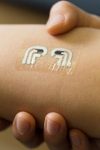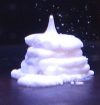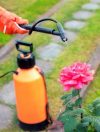ACS News Service Weekly PressPac: January 14, 2015
ACS News Service Weekly PressPac: January 14, 2015
- General Inquiries: Michael Bernstein, 202-872-6042
- Science Inquiries: Katie Cottingham, Ph.D., 301-775-8455
News Items in This Edition
Tattoo-like sensor can detect glucose levels without a painful finger prick
Scientists have developed the first ultra-thin, flexible device that sticks to skin like a rub-on tattoo and can detect a person’s glucose levels. The sensor, reported in a proof-of-concept study in the ACS journal Analytical Chemistry, has the potential to...

Levels of ’Molly,’ aka ecstasy, spike in rivers near music festival
The illicit drug called “Molly” or ecstasy is a serious concern for parents, law enforcement and now for environmentalists. Scientists report in the ACS journal Environmental Science & Technology that a major music festival in Taiwan coincides with a spike in...

DNA ‘smart glue’ could someday be used to build tissues, organs
DNA molecules provide the “source code” for life in humans, plants, animals and some microbes. But now researchers report an initial study showing that the strands can also act as a glue to hold together 3-D-printed materials that could someday be used to...

'Smart windows' have potential to keep heat out and save energy
Windows allow brilliant natural light to stream into homes and buildings. Along with light comes heat that, in warm weather, we often counter with energy-consuming air conditioning. Now scientists are developing a new kind of "smart window" that can...

Wrangling over pesticide ingredients comes to a head in 2015
Consumer advocates are fighting a new rule proposed by the Environmental Protection Agency that aims to address concerns over “inert” ingredients, including fragrances and dyes, in pesticides for non-food use. They say the proposal, which could become final...

Journalists’ Resources
Ebola Resources for Reporters
Have questions about the science underlying the ongoing Ebola crisis? ACS has set up a resource page on Ebola containing a list of related scientific papers, as well as Chemical & Engineering News articles, that journalists can access for free. It also includes a list of experts who can speak about this topic to the press. Visit our resource page at www.acs.org/Ebola.
ACS Experts: Chemistry Sources for Reporters
On a deadline? Need a reliable explanation of a chemistry concept? Then you need an ACS Expert. We have a growing list of scientists who can comment about neuroscience, green chemistry, pharmaceutical science, policy issues and much more. Just contact us at newsroom@acs.org.
ACS Editors' Choice
Do you want to keep up with the frontiers of science? Check out our new Open Access service, ACS Editors’ Choice. The website features one top story every day, selected from ACS’ more than 40 peer-reviewed journals, to give the public free, direct access to some of the most relevant scientific research going on today.

ACS National Meeting News
Couldn't go to the ACS 248th National Meeting & Exposition in San Francisco? Then check out our resources for info you might have missed:
Press releases: www.eurekalert.org/acsmeet.php
Press conferences: www.ustream.tv/channel/acslive
Toolkits on Global Challenges/Research Funding
Journalists covering some of the great global challenges of the 21st century and federal funding of research and development (R&D) can find videos and scores of other resources in websites that the American Chemical Society has prepared on those topics.
ACS Press Release Archive
Visit our press release archive for news on a variety of chemistry-related topics.
ACS Videos
The American Chemical Society encourages news organizations, museums, educational organizations and other websites to embed links to these videos.
ACS Video of the Month
Do carrots help you see better? - by Reactions
You heard it from your mom over and over again. "Eat your carrots. They'll help you see better!" So is it true? ACS Reactions teamed up with chemist Chad Jones, host of the Collapsed Wavefunction podcast, to crack the carrot case wide open. Check out the video to find out more.
Check out more Reactions videos and subscribe to the series at http://youtube.com/ACSReactions and follow Reactions on Twitter @ACSReactions.
C&EN Video Spotlight
What is tinsel made of?
How is the shiny tinsel that decorates many Christmas trees made? Today it's mostly made of plastic. But did you know tinsel used to contain chemical elements like lead, aluminum and copper? Find out all about tinsel's chemistry history in this Speaking of Chemistry holiday episode.
Related Links
ACS Podcasts
Science Elements
Science Elements is a podcast that makes cutting-edge scientific discoveries from ACS journals available to a broader public audience. Listen to the podcasts at www.acs.org/ScienceElements.

This is the latest American Chemical Society (ACS) Office of Public Affairs Weekly PressPac with news from ACS’ more than 40 peer-reviewed journals and Chemical & Engineering News.
This information is intended for your personal use in news gathering and reporting and should not be distributed to others. Anyone using advance ACS Office of Public Affairs Weekly PressPac information for stocks or securities dealing may be guilty of insider trading under the federal Securities Exchange Act of 1934.
Please cite the individual journal, or the American Chemical Society, as the source of this information.
The American Chemical Society is a non-profit organization chartered by the U.S. Congress. With more than 161,000 members, ACS is the world’s largest scientific society and a global leader in providing access to chemistry-related research through its multiple databases, peer-reviewed journals and scientific conferences. Its main offices are in Washington, D.C., and Columbus, Ohio.

